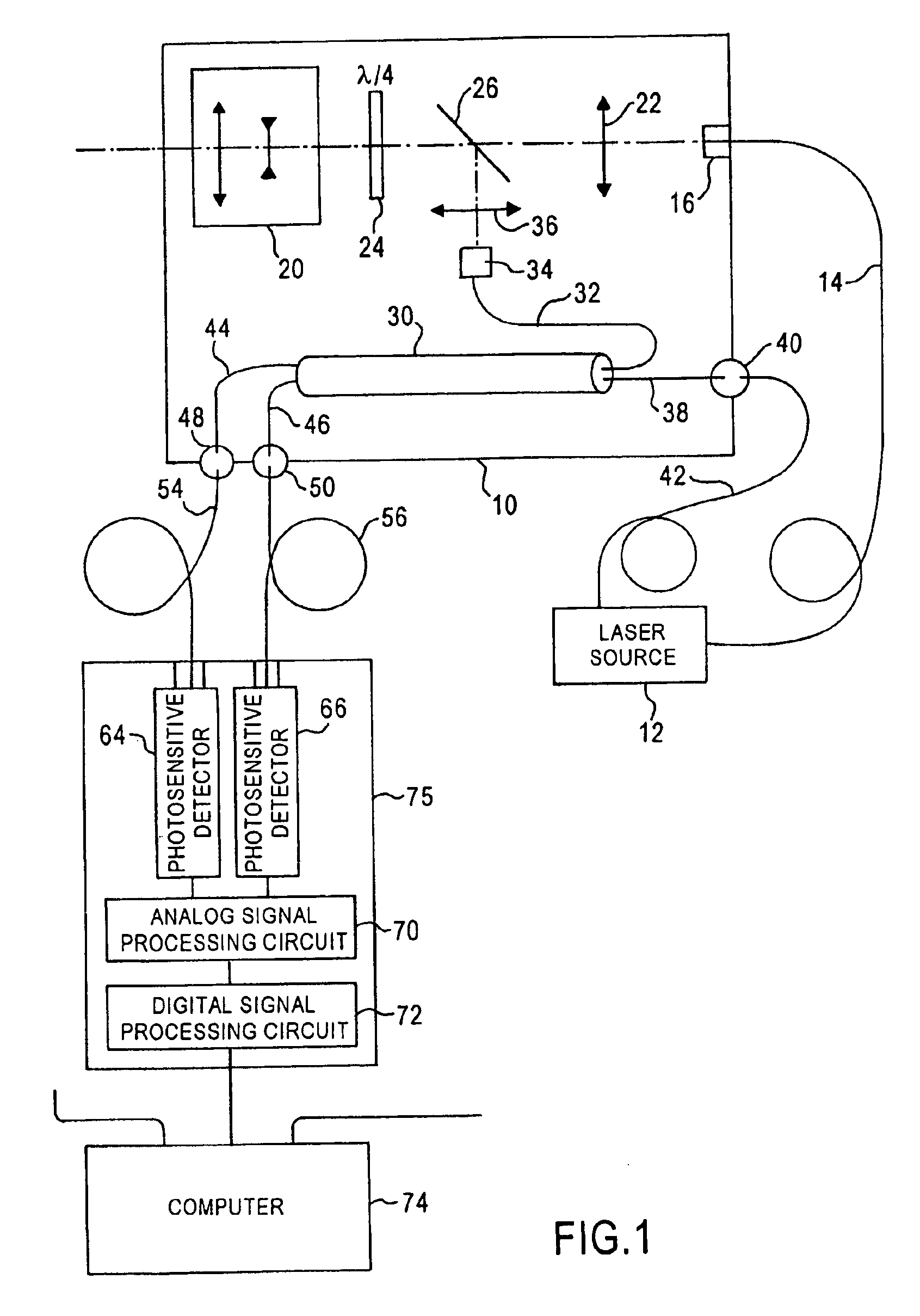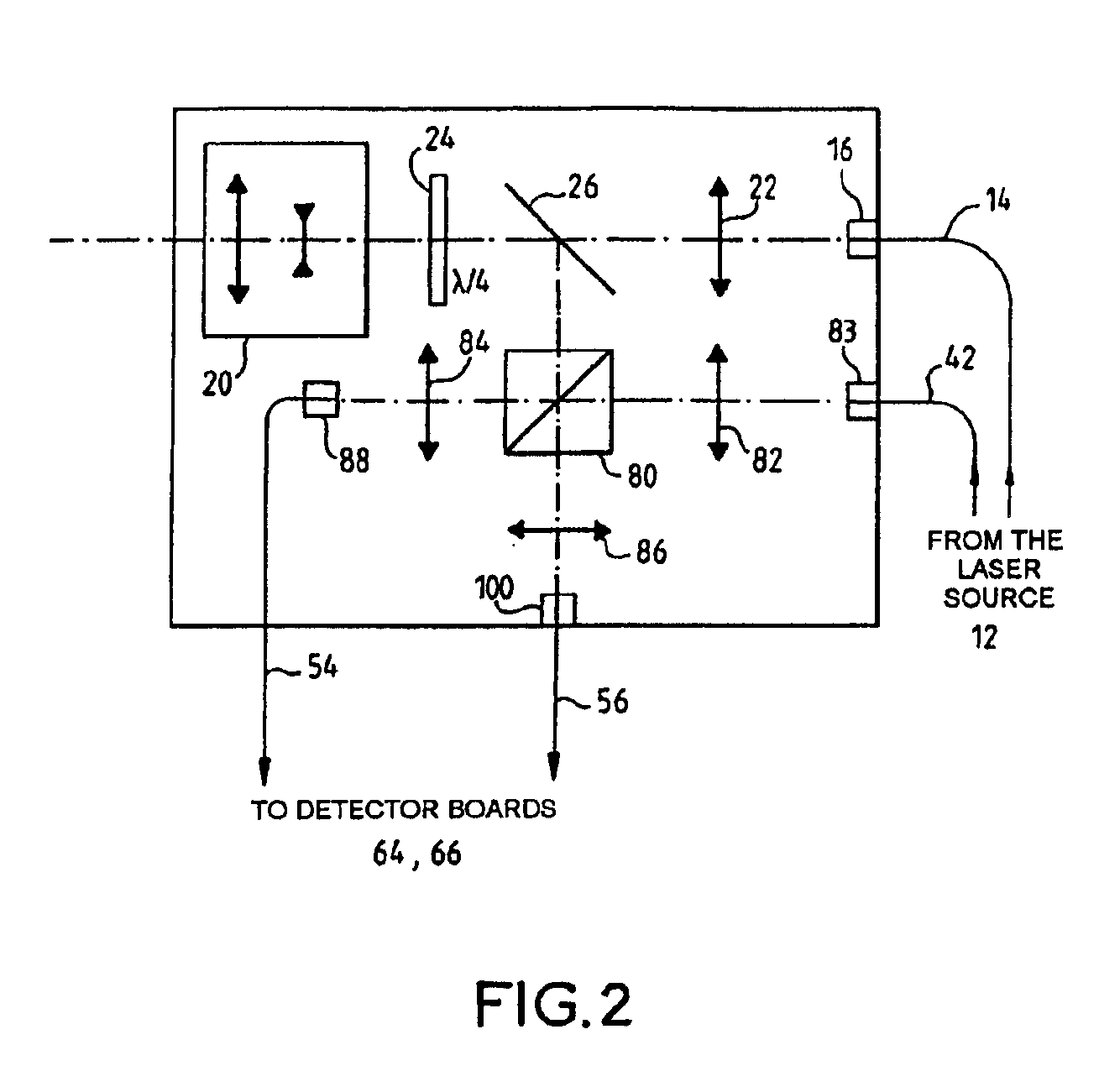Laser anemometer
a laser anemometer and laser technology, applied in the field of laser anemometers, can solve the problem of much more space in proximity
- Summary
- Abstract
- Description
- Claims
- Application Information
AI Technical Summary
Benefits of technology
Problems solved by technology
Method used
Image
Examples
Embodiment Construction
The laser anemometry system includes a support panel 10 carrying the optics for emission and reception of a laser beam, but not carrying the laser source from which this beam originates. The laser source 12 is remotely located so as to be situated at a different position, and it is connected to the panel by an optical fibre 14. This fibre is preferably of the single-mode and polarization-preserving type in order to conserve the polarization of the beam, the polarization being useful in particular for splitting the emission beam and the return beam inside the emission and reception optics (this splitting is carried out by a birefringent plate, as will be seen).
The fibre end connected to the panel is carried by a holding head 16, preferably with means (not shown) for adjusting the position of this head on the panel.
The emission and reception optics comprise the elements conventionally needed for producing a laser beam focused at a distance of about fifty metres. These optics have been...
PUM
 Login to View More
Login to View More Abstract
Description
Claims
Application Information
 Login to View More
Login to View More - R&D
- Intellectual Property
- Life Sciences
- Materials
- Tech Scout
- Unparalleled Data Quality
- Higher Quality Content
- 60% Fewer Hallucinations
Browse by: Latest US Patents, China's latest patents, Technical Efficacy Thesaurus, Application Domain, Technology Topic, Popular Technical Reports.
© 2025 PatSnap. All rights reserved.Legal|Privacy policy|Modern Slavery Act Transparency Statement|Sitemap|About US| Contact US: help@patsnap.com



